Amblyseius swirskii
- Paper bag-125 000 individuals
-
Used to control:
✅ Greenhouse whitefly (Trialeurodes vaporariorum);
✅ Tobacco whitefly (Bemisia tabaci);
✅ Tobacco thrips (Thrips tabaci);
✅ Western flower thrips (Franklinella occidentalis);
Culture:
✅ Cucumber, pepper, eggplant, wild strawberry, strawberry, ornamental plants.
Package:
✅ 1L tube
Appearance
The female is pear-shaped with 4 pairs of legs, about 0.6 mm long. The body is usually beige in color, but the color of the mites can vary from bright red to pale yellow depending on the food. Predatory mites that feed on thrips or whiteflies are pale yellow to light brown in color. The legs are long, especially the front pair. Males are somewhat smaller than females up to 0.45 mm long. To achieve a stable result in the control of whiteflies and thrips, we recommend using Amblyseius swirskii in combination with other types of bioagents such as: Hypoaspis miles, Eretmocerus eremicus, Encarsia formosa, Macrolophus pygmaeus, Orius spp
Effect of the temperature on development
| Development phase | Time of preimaginal development (days) at constant temperature °С | ||||
|---|---|---|---|---|---|
| 20°С | 25°С | 30°С | 35°С | ||
| Egg | 3,1±0,05 | 1,7±0,05 | 1,1±0,03 | 2,0±0,017 | |
| Larva | 1,3±0,05 | 1,0±0,01 | 1,0±0,01 | 0,8±0,025 | |
| Protonymph | 3,2±0,06 | 2,3±0,06 | 2,2±0,05 | 1,9±0,066 | |
| Deutonymph | 3,3±0,09 | 2,0±0,06 | 1,7±0,07 | 2,2±0,12 | |
| In total | 10,9±0,25 | 7±0,18 | 6±0,16 | 6,9>±0,228 | |
Recommendations on applying:
| Latin name of the bioagent | Prophylaxis | Doses by degree of infection | ||
|---|---|---|---|---|
| small | average | high | ||
| Amblyseius swirskii sachets | 1 пак/м2 | 1 пак/м2 | ||
| Amblyseius swirskii bran | 25 ос/м2 | 50 ос/м2 | 50 ос/м2 | |
| Frequency of application | 1 time per month | in a week | weekly | weekly |
✅ 5L bucket -125 000 individuals
✅ 5L paper bag-125 000 individuals
✅ 1L tube – 50 000 individuals
✅ sachets -150 individuals
Storage and transportation conditions
- Short-term storage: the accumulated biomaterial (adults and nymphs of a predatory mite) can be stored for no more than one day after receiving at low temperatures (8-12 °C) in a refrigerator.
- 1L tube – contains 50,000 predatory mites and a small amount of food mites mixed with bran;
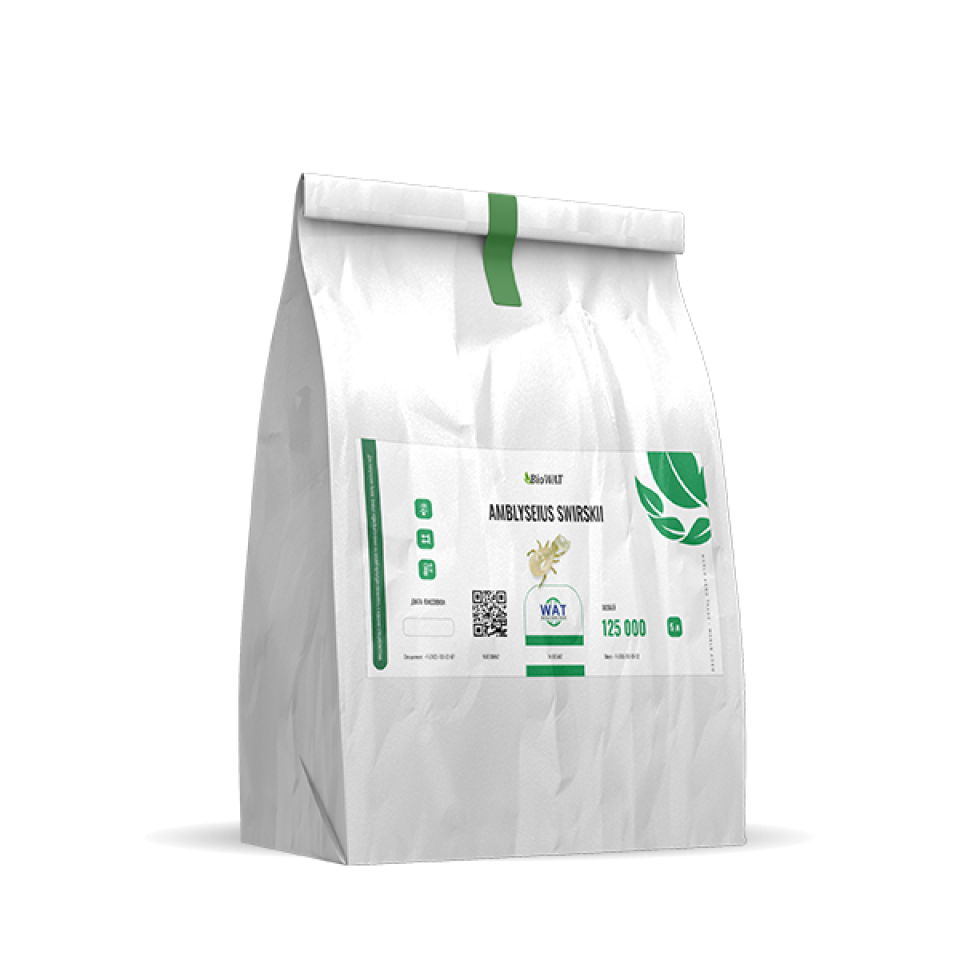
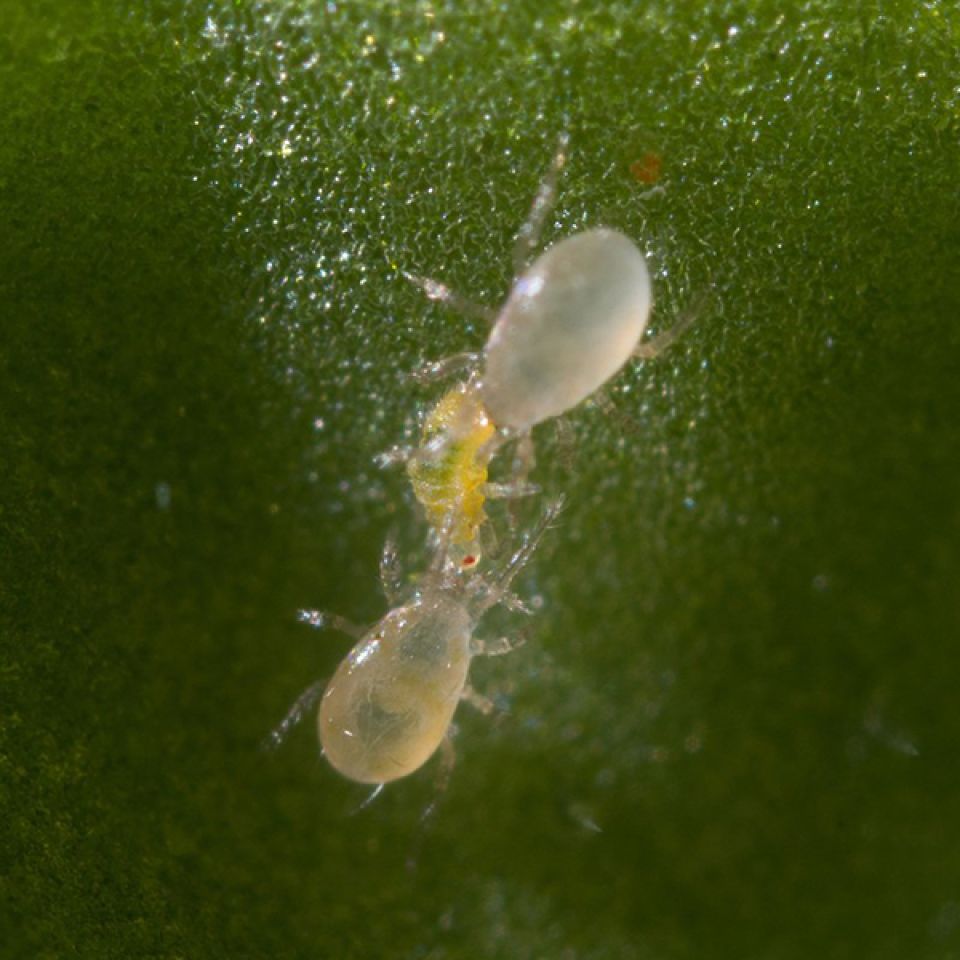
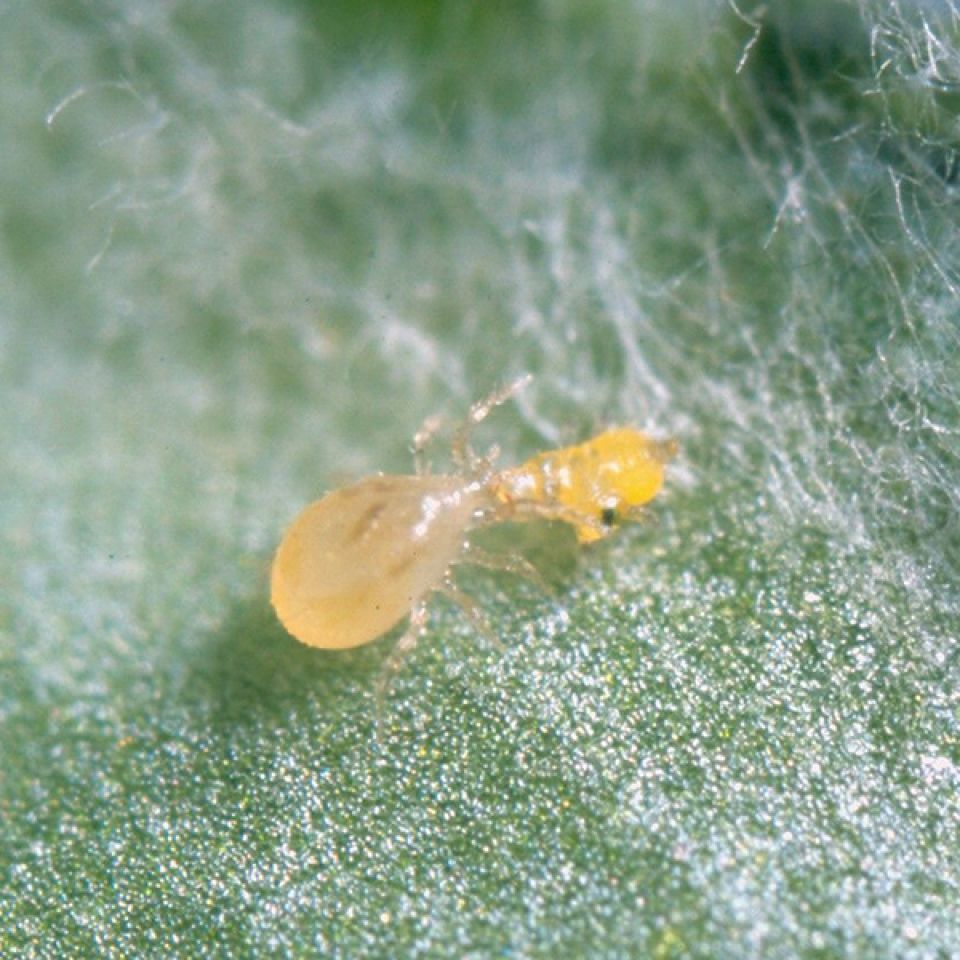
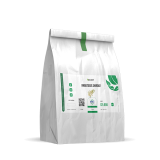
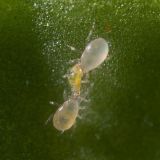
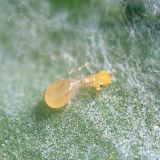
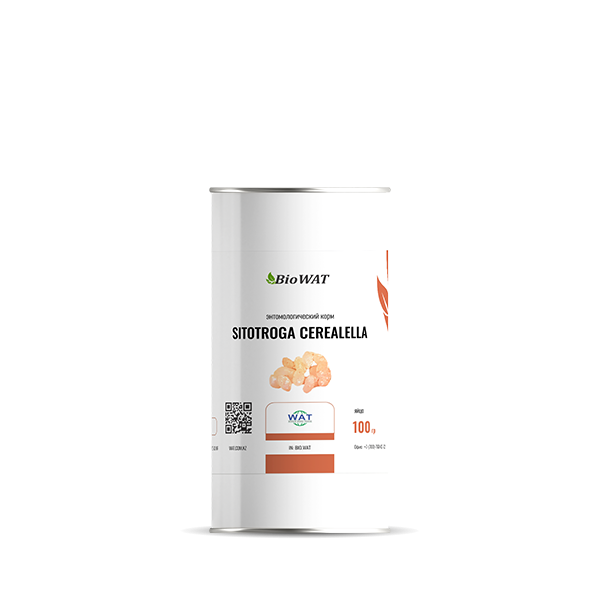
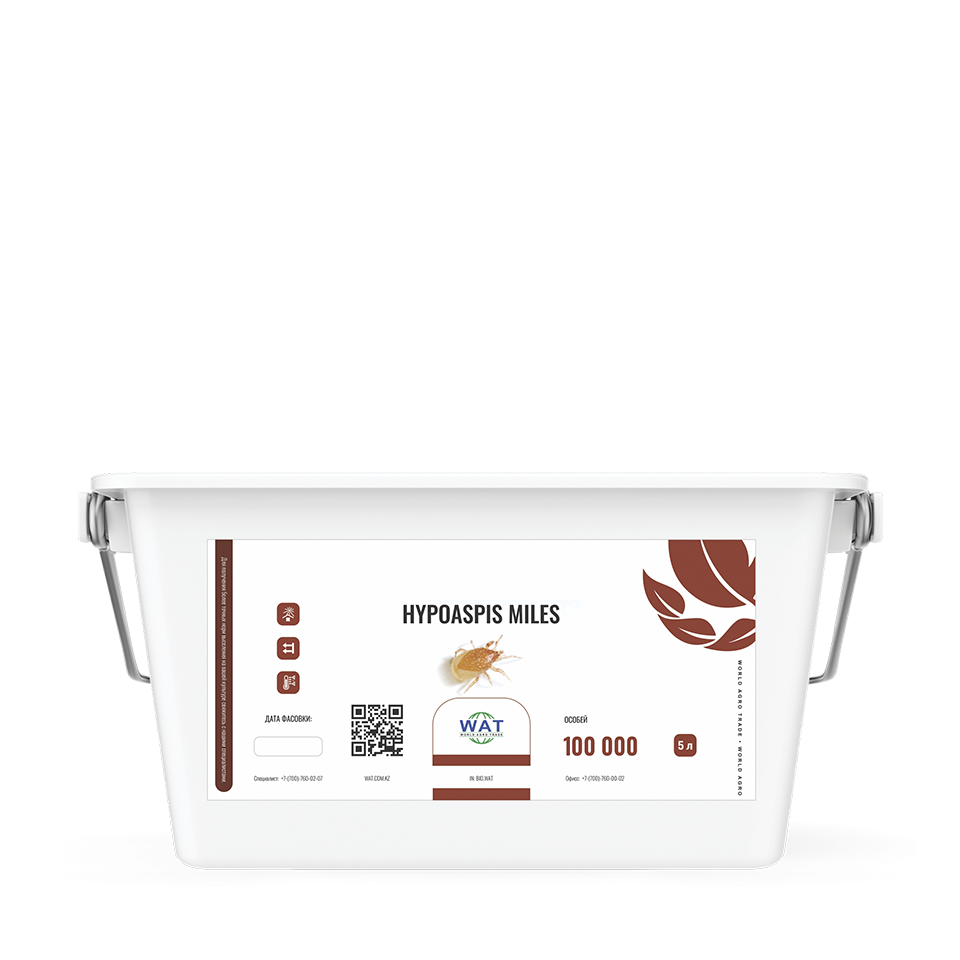
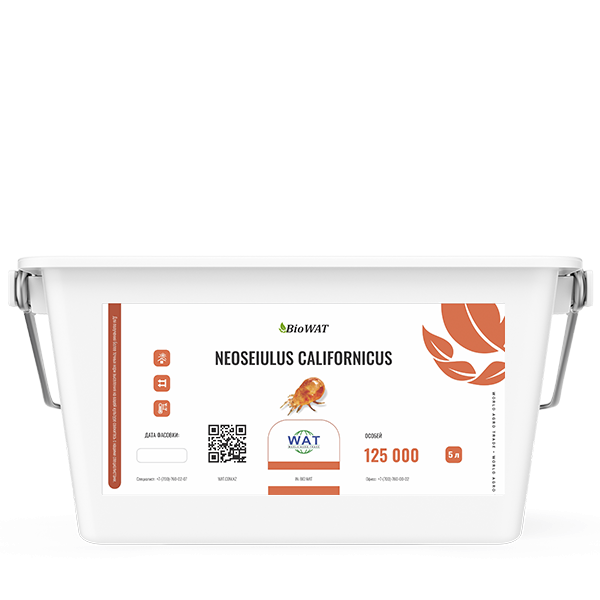
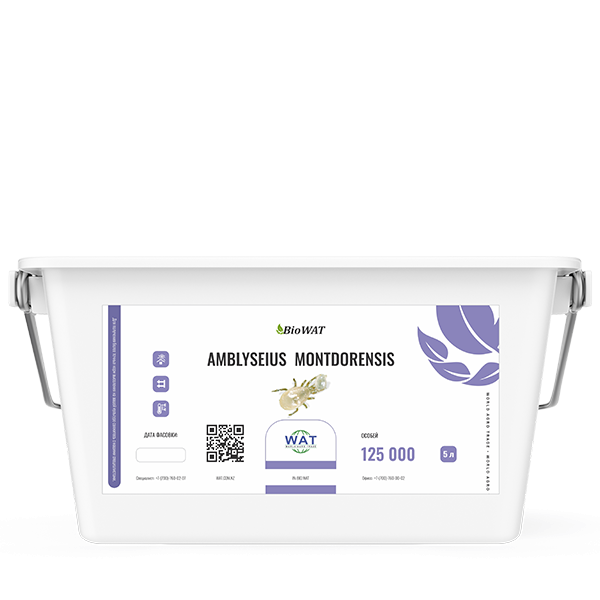
 WhatsApp
WhatsApp